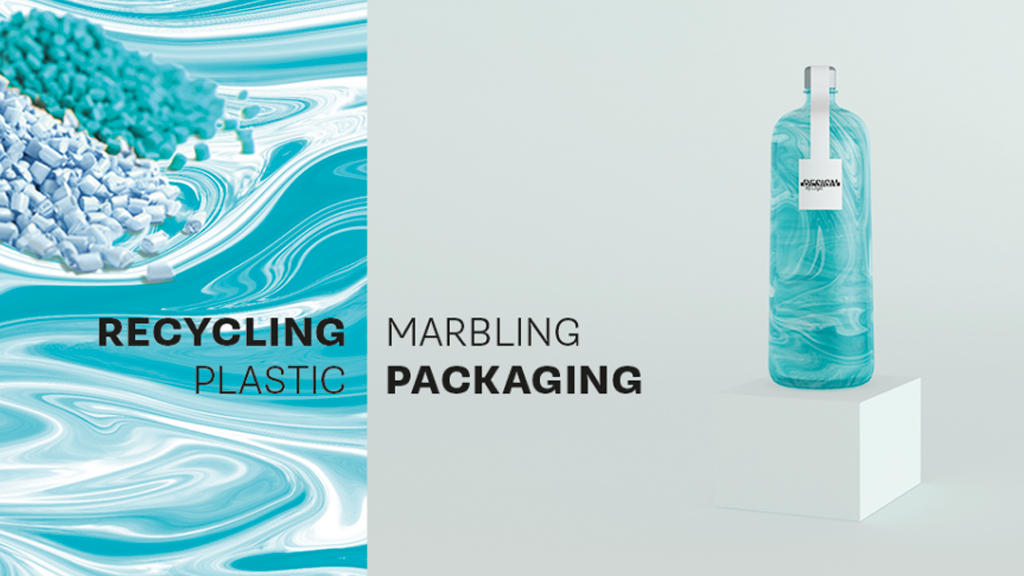Giving an aesthetic value to recycled plastic might initiate the transition by raising people’s consciousness about manufacture, single use and the sorting of plastic packaging.
For decades, plastic has been considered as a breakthrough innovation and a providential material, in particular within the food industry. However, over the past few years, plastic has become the target of a global scale criticism. From innovation to waste and environmental problem, plastic can be seen as the emblem of the overconsumption model and ‘throwaway society’, a system that demonstrated its limits.
Nevertheless, this material is ambiguous in our societies, necessary for mobility and key for food safety, plastic has been the main constituent of packaging for decades. Regardless of its technical assets, plastic waste forms a ‘7th continent’ and invades our daily lives. Some 10 million tons are produced every second and 125 million tons are polluting the oceans. As particles of plastic have been found for decades in the stomachs of numerous marine animals, the issue tends to reach a critical point as an average of 52 000 micro plastic particles are ingested by the human body every year.
Faced with this environmental and health menace, public authorities and the European Commission have put in place coercive measures which are still considered partial or insufficient. There are a growing number of popular initiatives to find alternatives and some of them are even calling for a boycott. Fearing this ‘plastic bashing’, several industrial groups such as Carrefour, Danone or Nestlé are aiming to reduce packaging or eliminate it completely by testing large-scale logging system such as LOOP.
If ‘zero waste’ remains the final goal, we still have a long way to go… Here we offer a perspective which could constitute a first step in resolving the problem.
Behind the threat, an opportunity?
If the goal is to sort 100% of plastic waste by 2025, it only partially resolves the issue. The problem of vast mountains of waste remains even when exported to other countries where it is out of sight. The bin, even when yellow, is not a magic vortex, a cloud into which our waste will disappear…
As packaging is responsible for 46% of plastic waste, the challenge is ‘to prevent the creation and spread of new plastic waste’, a turn of phrase used by Roland Geyer in a research paper published in the journal Science Advance. If “zero waste” can be seen as today’s major utopia, it is necessary to question and, above all, rethink the issue to make it part of an environmental and sustainable reality. Consequently, plastic is both a challenge and an opportunity for design agencies.
A challenge as it means design realistic solutions to address the waste issue, innovate and turn this waste into a resource. Also, to rethink the value chain and design products that can not only be disposed of more easily but that are also reusable. This is a fantastic opportunity to initiate a paradigm shift.
In this context, we question: how can we make this material environmentally friendly? And how can we make our efforts and actions visible to the consumer?
What is the lifecycle of recycled plastic?
After being sorted in recycling bins, plastic is collected, sorted according to type, cleaned and shredded. Classified, either according to their colour and transparency plastic shreds are melted to get recycled plastic pellets and subsequently become a new raw material for the industry.
Recycled plastic packaging, an ethical and aesthetic choice
When the different coloured recycled plastic granules are melted and mixed we obtain a “marbling” effect.
In this context, marbling is an aesthetic signature that can also demonstrate the use of recycled plastic.
By using this new raw material, the manufacturers are showing their commitment and making the use of recycled plastic obvious to the consumer. The brand commitment is therefore visible. In addition, the randomness of the marbling pattern gives the packaging an artisanal aspect. With this distinctive design, the packaging is transformed, it is no longer a merely functional and industrial object, but a unique piece. Who knows, maybe with this extra touch of style given to our water bottles we may be more inclined to refill them rather than throwing them away?
Geraldine Denis, Innovation Manager
Agathe Rouy-Copier, Volume Designer

